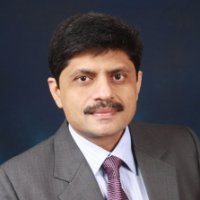The world is facing an energy dilemma, and the only way out of it is if we can cut the energy consumption in half. There exists a big demand-supply gap.
How do we go about solving this in what is the heart of IoT — servers?
Mr. Nikhil Pathak, VP and General Manager, IT Business & SAARC at Schneider Electric India speaks with Dilin Anand from EFY. Schneider Electric SE is a French multinational corporation that specialises in electricity distribution, automation management and produces installation components for energy management.

Q.Connected devices existed before. What makes automation any different now?
A.While connected products have always existed before, the first question was whether we were able to get the data. Once we developed the capability to get the data, then came the question of whether we were able to analyse the data to glean information out of it. The most important thing about data analytics is that gives the user the ability to predict.
Q.How does automation help improve efficiency in data centres?
A.Connectivity and software can help make energy more reliable and safe. This is done through the use of automation so as to minimise the number of waste cycles in any system or machinery. Critical cooling, server racks, integrated building management system, and security usually drive data-centre infrastructure. All these have elements, which when automated with an intelligent system could result in the deployment of proactive decisions that continuously keep the system running in its most efficient state.
Q.Could you elaborate on the importance of data here?
A.The devil lies in the data. Data analytics lets us predict how a particular piece of equipment is going to behave. To give an extremely simplified example of this, let’s consider there is a battery in the adjacent room. We may assume it is getting charged, but it could be discharging right now, or even undergoing overcharge beyond its capacity. It could be heating up beyond its certified limits, which makes it prone to be explosive devices. Instead of coming to know when the device eventually fails, we will be aware of the problem even before it happens.
Q.What do you feel to be an area ripe for disruption in the server space?
A.Cooling aided by data could be a disruptor because it has a multiplier effect – if you get a chip that could withstand a few degrees higher, then the savings you make on cooling systems are enormous. As the heat generated by individual servers go down, the cumulative heat faced by the data centre will decrease. Sensors collecting temperature data allow cooling systems within the servers to relax, the power consumed by them will also go down.
This way the cooling systems need not blow at full speed all the time. Energy can be reduced further by setting fans to operate at less than full capacity without compromising performance at full load; under Fan Affinity Law, a fan working at up to 80% of capacity for example will reduce energy consumption by up to 50% for the same performance.
Q.What’s next for cooling?
A.Efficiency for refrigerants has led to their evolution, and today we have very efficient solutions available to us. Free cooling is the next generation technology where you can cool the air without the AC by mixing the internal server air with ambient air available outside. Software controlled dimming and light temperature controls are also very popular these days.
Q.How else can we make a datacenter more efficient?
A.Uninterrupted power supplies are a very important element here. Continuous power and clean power will help data centres run more reliably. Modern UPS’ have e-conversion, which can deliver up to 98% efficiency using 4-step inverter technology. You also see active floors being used, which have sensors embedded into them to keep track of the environment. Inverter driven cooling is another important area where we see compressors and brushless DC motors being used a lot. A significant area of focus is in imbibing modularity into the systems so that scaling up becomes much easier than before.





